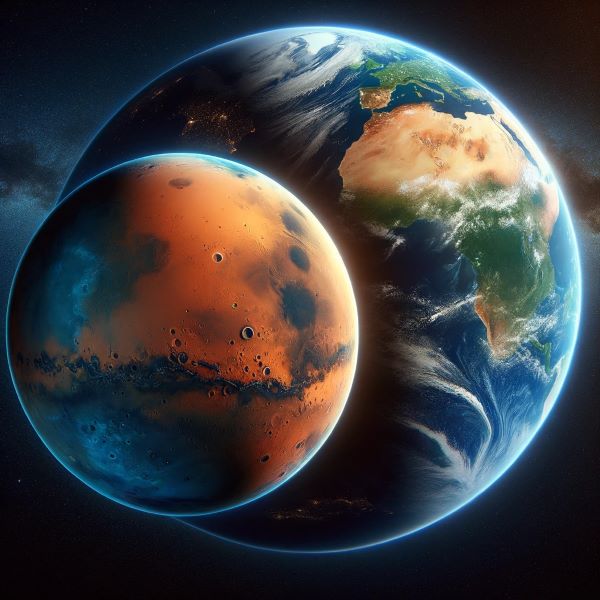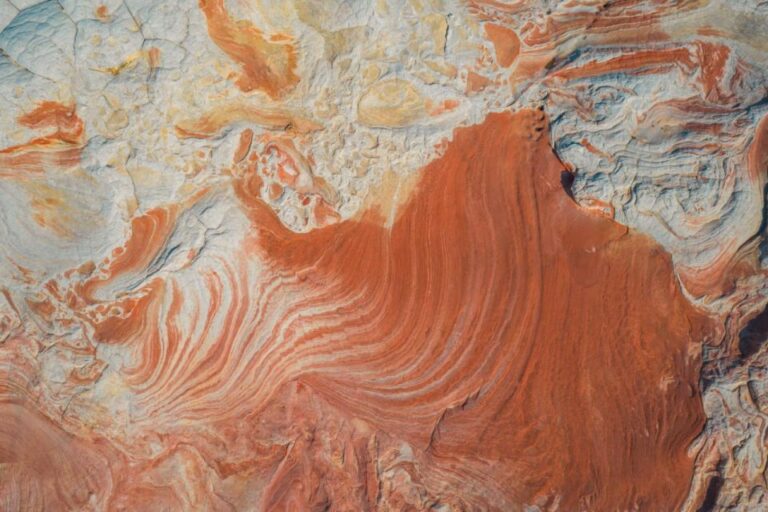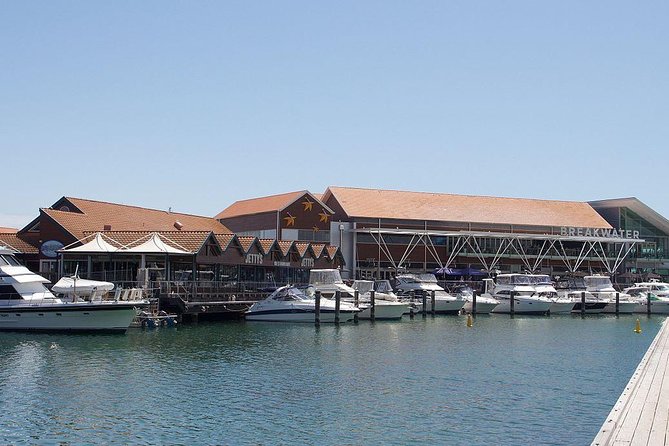How big is Mars compared to Earth?
As one of the closest planets to us, Mars is often compared to Earth in many different ways, and it’s the only planet where humans could realistically even have a chance of living. Go in one direction and we’d roast away being too close to the Sun and getting caught up in the blazing atmosphere of Venus, and go past Mars you come to the Jovian planets which have no hard surface for us to land on.
So, Mars is definitely our only option, and it looks like we’ll be visiting there in the not-too-distant future. But just how big is the planet, and how does it compare to our own?
How big is Mars compared to Earth?

Mars has a radius of 2106 miles, whilst Earth has a radius of 3959 miles, meaning Mars is a little over half the size of our planet. This means that Mars is the second smallest planet in the solar system behind Mercury.
The size of a planet is definitely something that we can look at to compare the two planets, but it’s not the only thing. We can also look at the mass and volume of the two planets and compare them to each other.
So, if we look at the mass of Mars, then actually it’s even smaller – it has a mass of 6.39 × 1023 kg, compared to the Earth’s mass of 5.97×1024 kg. That means that the Earth has a mass that is almost 10x that of the smaller planet Mars. Another way we can compare the two is to look at the volume. Mars has a volume of 1.6318×1011 km3, whereas the Earth’s volume is much closer to a trillion cubic meters. In total, this means that you could pretty comfortably fit 6 planets the size of Mars into Earth.
Similarities between the two planets
Although size is obviously quite a big difference between these two terrestrial planets, there are actually some similarities that they both share with each other which makes Mars the prime candidate should we ever need to leave the planet Earth. You can read more facts about Mars here, but now we’ll quickly look at the two planets’ main similarities.
Water
The signs of liquid water on the surface of Mars has been something astronomers have been excited about for a while, as it’s a true sign that there’s water there that could sustain us. Recently, there’s been a shadow of doubt over this, as what we thought was water may not be, with some astronomers doubting the likelihood of subsurface lakes.
Of course, oxygen is obviously another key factor that we need to think about, as there isn’t the same level of oxygen in the atmosphere there (it’s estimated at around 0.2%, as it’s mainly made up of carbon dioxide). But when it comes to water, there are at least signs of hope.
Seasons
Not all of the planets have traditional seasons on them like we do on Earth, but Mars is the most similar to ours. I say similar – the big difference is that it takes Mars twice as long as Earth to make its way around the moon, which means that the seasons there actually end up lasting twice as long as on our own planet.
And whilst the temperature would definitely be something we need to solve – Mars is still an extremely cold planet in comparison to ours – it’s the only one that could work. I mean, the North pole of Uranus has 42 years of daytime and then 42 days of nighttime!
Canyons and volcanoes
Another area where Mars and Earth are actually pretty similar is in the canyons and volcanoes that we’ve noticed on the planet. Now, there are some differences here, as typically what we see on Mars is larger or more pronounced versions of what we have on Earth.
One of the best examples is to look at the biggest canyon that both planets have. Obviously, on Earth this is the Grand Canyon, which is just over a mile deep and 248.5 miles wide. If we then look at the largest canyon on Mars, Valles Marineris, it pales in comparison. Valles Marineris is around 4 times as deep as the Grand Canyon, and at least 10 times as wide too. So, there are similarities, but Mars’ features are just a little bigger.
The Wrap Up
To sum it up, there’s no denying that Mars is obviously significantly smaller than Earth. however actually the amount of dry land on both planets is pretty similar. This is because much of Earth’s surface is covered in water as opposed to dry land.
And whilst the smaller size of Mars does make a big difference, it’s much more like our planet than any other in the solar system. So whilst the size may take some getting used to, it’s still possible that humans could live on Mars.





